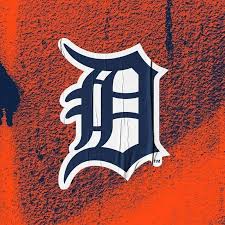
Crystal Palace FC
Crystal Palace FC is one of London’s most fascinating teams, combining tradition, resilience, and ambition. Based in South London, the Eagles have earned a loyal fan base thanks to their spirited style of play, iconic home ground at Selhurst Park, and strong community presence. This article explores the journey of Crystal Palace FC, its history, achievements, players, and influence in English football, offering a detailed introduction to a club that continues to leave its mark on the Premier League in https://miso88.cfd/
The Origins of Crystal Palace FC
Crystal Palace FC was officially founded in 1905, though its roots trace back to workers connected with the original Crystal Palace Exhibition building of 1851. The team initially played in the Southern League before joining the Football League in 1920. Over time, the club developed a strong reputation for competitiveness and an unwavering determination to succeed despite financial and footballing challenges.
Selhurst Park became the permanent home of Crystal Palace in 1924. This stadium remains one of the most atmospheric venues in English football, known for its passionate supporters who create a vibrant match-day experience.
Rise Through the Divisions
The club spent much of its early history fluctuating between divisions. Crystal Palace made its first appearance in the top tier of English football in 1969 under manager Bert Head. The 1970s and 1980s brought mixed fortunes, including relegations and promotions, but also introduced talented players who would become local legends.
In the late 1980s and early 1990s, the Eagles reached new heights under manager Steve Coppell. A major highlight was reaching the 1990 FA Cup Final against Manchester United, where Palace narrowly missed out on lifting the trophy after a replay. During this era, Crystal Palace also achieved their highest ever league finish, third place in the old First Division in the 1990–91 season.
Premier League Journey
When the Premier League launched in 1992, Crystal Palace was among the founding members. The club, however, faced a turbulent period with relegations and promotions throughout the 1990s and 2000s. Despite challenges, the Eagles always found a way back, proving their resilience time and again.
The modern era of stability began in 2013, when Crystal Palace secured promotion to the Premier League through the Championship play-offs, defeating Watford in a dramatic final at Wembley. Since then, the club has maintained its Premier League status, becoming an established top-flight team admired for its fighting spirit.
Notable Players and Club Legends
Crystal Palace has been home to several outstanding players who left a lasting impact on English football. Club legends include:
-
Geoff Thomas – a powerful midfielder and captain during the successful Coppell years.
-
Mark Bright and Ian Wright – the iconic strike partnership that lit up Selhurst Park in the late 1980s and early 1990s.
-
Wilfried Zaha – arguably the modern face of Crystal Palace, known for his dazzling dribbles, pace, and creativity. A product of the club’s youth academy, Zaha symbolized Palace’s attacking flair for over a decade.
-
Julian Speroni – a loyal goalkeeper who became a cult hero for his shot-stopping ability and commitment to the team.
These players, along with many others, contributed to the Eagles’ proud identity and connection with fans.
Selhurst Park: The Fortress of South London
Selhurst Park is more than just a stadium; it is the beating heart of Crystal Palace FC. Located in Croydon, South London, the ground has a capacity of around 25,000 and is renowned for its passionate atmosphere. The Holmesdale Road Stand, in particular, is famous for hosting the club’s most vocal supporters, who create an electric environment every match day.
Plans for the redevelopment of Selhurst Park have been announced, aiming to modernize the stadium while preserving its unique character. The goal is to provide improved facilities for fans while maintaining the strong connection between the team and its community.
Community Engagement and Youth Development
Crystal Palace FC is deeply rooted in its local community. Through the Crystal Palace Foundation, the club invests in education, health, and social inclusion projects across South London. These programs highlight the club’s commitment to giving back and supporting the next generation.
The youth academy has also been a key part of Palace’s identity. The club has produced top talents who went on to shine in the Premier League and beyond. From Wilfried Zaha to Aaron Wan-Bissaka, the academy is recognized for developing skillful and hardworking players who embody the Eagles’ spirit.
Playing Style and Identity
Crystal Palace is known for its energetic and fearless style of play. Over the years, the team has combined defensive organization with attacking pace, particularly on the wings. The Eagles are often associated with counter-attacking football, making them a dangerous opponent for even the biggest Premier League clubs.
Managers such as Roy Hodgson and Patrick Vieira have brought different tactical approaches, but the core values of resilience, unity, and determination remain central to the team’s identity.
Memorable Achievements
Although Crystal Palace has not yet lifted a major domestic trophy, the club boasts several memorable achievements:
-
1990 FA Cup Finalists – pushing Manchester United to a replay.
-
Third place in the 1990–91 First Division – the club’s highest league finish.
-
Multiple promotions via the Championship play-offs, most notably the 2013 success that secured a new Premier League era.
-
Stability in the Premier League – maintaining top-flight status for over a decade, a significant achievement in the competitive landscape of English football.
Crystal Palace in Modern Football
Today, Crystal Palace FC continues to grow as a respected Premier League club. With a passionate fan base, ambitious leadership, and a blend of experienced players and exciting young talent, the Eagles remain competitive in one of the toughest leagues in the world.
The club’s unique position as a proud South London representative adds to its cultural significance. Unlike some larger London clubs, Crystal Palace maintains a close-knit community feel, which is a key factor in its enduring popularity.
Conclusion
Crystal Palace FC is a club defined by resilience, passion, and identity. From its origins in 1905 to its current status in the Premier League, the Eagles have experienced highs and lows but always retained their spirit. With iconic players, a loyal fan base, and a vision for the future, Crystal Palace stands out as one of English football’s most authentic and inspiring teams.
For football fans around the world, Crystal Palace represents more than just a club—it is a story of determination, community, and pride. As the Eagles continue their journey in the Premier League, they carry the hopes of South London and the admiration of football supporters everywhere.

